MY great-grandfather Donald Munro came from Scotland in 1848 and purchased a property called Keera at Bingara in North West NSW in 1858. My grandfather Hugh was born at Keera in 1862 and later managed the property, initially for the family and then for [noted local grazier] Thomas Cook, who bought it in 1887, with the proviso that Hugh would have the option to buy it later. When Thomas Cook died in 1912, Hugh had the chance to purchase the properties of his choice from the estate. He bought Keera, along with several others.
Hugh’s wife, my grandmother Grace Emily Munro, was the real personality of the family. She was as accomplished with horses as she was at needlework and had great empathy for women in the bush. In 1922, she formed the Country Women’s Association (CWA) and was elected president. By the time she stepped down four years later as her hard work took its
My father [H] Gordon Munro was born in 1900. He took over the management of Keera and formed Booroomooka Angus Stud in 1926. Initially, the farm bred Shorthorns, but my father could see the carcase quality of Angus would be suitable for the country at Keera. He started off with about 10 cows and over the years bought bulls from New Zealand, Scotland and America.
“In 1960, my father sold one of his bulls to Japan and that was a huge thing. I don’t think he’d believe the sales we do now.”
Today, Booroomooka is one of the biggest,most innovative and established Aberdeen Angus studs in Australia. We run a seed stock and commercial business with 4,500 head of cattle over four properties, Keera, Glenroy, Gouron and Glen Park, totalling 9,300 hectares. Now, if we want new genetics, we can buy semen from anywhere in the world and the accompanying technology involving AI [artificial insemination] is equally amazing. With the help of a technician, we can AI 250 cows in an afternoon and there’s a good rate of conception.
Another innovation has been the joining of heifers as yearlings instead of as two-year-olds. We look after them and grow them so quickly now it means an extra calf per animal. My father went to the Sydney Royal Easter Show with his bulls every year and was very successful. This was important because in those days there was no performance recording. His rosettes were his EBVs [Estimated Breeding Values]. Now, if you can’t measure it, you can’t take any notice of it and we have Breedplan – a genetic evaluation system for livestock, which started in the 1980s. It has enabled us to make huge changes, getting more size out of the Angus, but still retaining marbling, fertility and calving ease. We can also detect the animals which, if mated, have a chance of producing a calf with genetic faults.
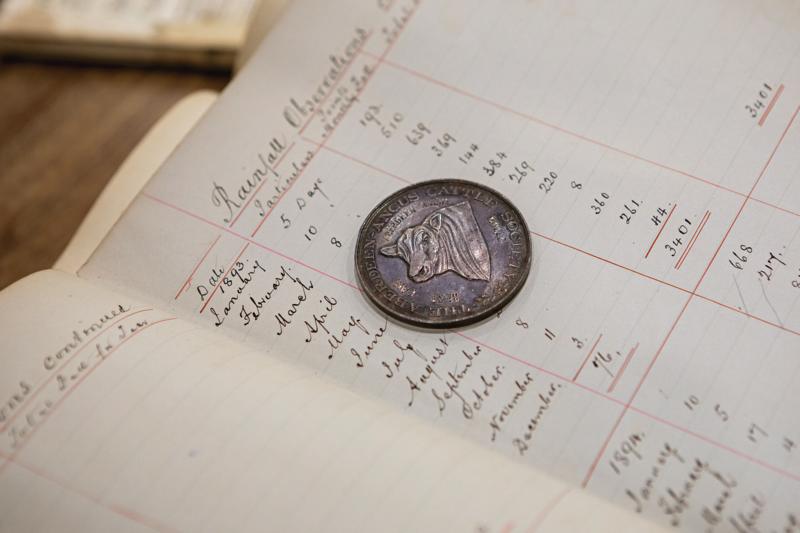 Hugh’s father H Gordon’s prized Sydney Royal Easter Show medals.
Hugh’s father H Gordon’s prized Sydney Royal Easter Show medals. I don’t think my father embraced Breedplan as enthusiastically as I did, but you still need a stockman’s eye to check that physically the animal is all right – good feet and wide muzzle and those sorts of things. Although most of the dramatic changes I’ve seen in my lifetime have been for the better, growing up I did enjoy spending time with the stockmen and I had a couple of trips as a drover with packhorses. They were days I cherish. We also used to have jackaroos at Keera and it was great having that educational arm of the property. They were taught various skills, including horsemanship and whip cracking, and mostly they were very useful and went on to do very well.
We stopped employing them in the Seventies because everything had to be tightened up with costings and it’s become even harder now with Occupational Health and Safety rules. Keera used to have its own tennis court and cricket ground and an aspiring jackaroo was always asked if he played. If he was good at both, he’d be straight in, as we used to get quite competitive between properties. We also had a small school, with only 10 pupils, but with the advent of bussing, the little schools have all gone. From an educational point of view, that’s probably a good thing.
A typical day would see us start at 7.30am. If we had a tough day branding or lamb marking, we’d be up at dawn. Everything was done on horseback and the horses had to be very tough. Now with campdrafting, you wouldn’t give a horse a full day’s work. In fact, the horse work on Glenroy, where I now live, has now been transferred to 4WDs.
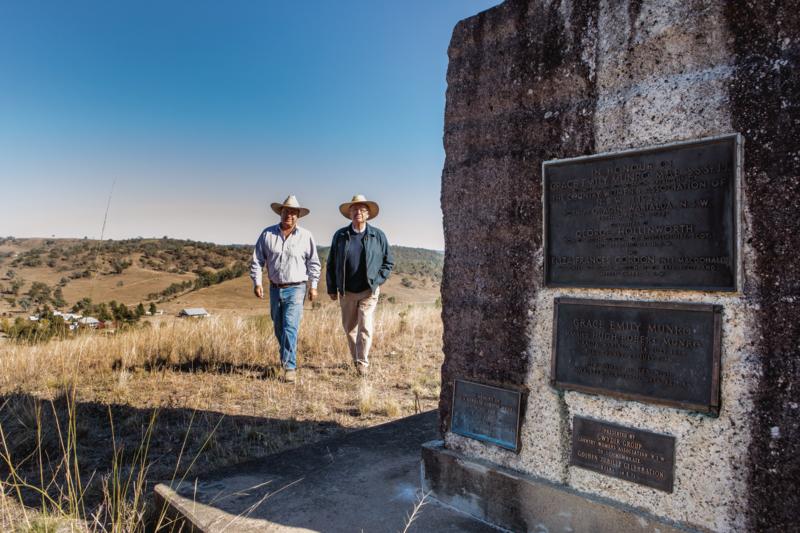 Hugh (right) and his son Sinclair, at the ‘Keera Memorial’, which celebrates past generations who have worked on the property.
Hugh (right) and his son Sinclair, at the ‘Keera Memorial’, which celebrates past generations who have worked on the property.
In 1960, my father sold one of his bulls to Japan and that was a huge thing. I don’t think he’d believe the sales we do now. In 2012, one bull alone, Frankel F510, sold for $65,000. In 2016 we sold 220 bulls for more than $2 million and have also sold over 120 bulls to the Northern Territory. I never thought that would happen, either. Of course, the other thing that has changed our business is computers. When a cousin first brought one out here, I thought he was so innovative. “However will all us farmers afford a computer?” I wondered. “You’ll have to club together and share one,” he replied. Now every kid has a computer. We used to need two bookkeepers, but now with a computer, my son Sinclair can nearly do it all himself on top of his other work.
Sinclair Munro, 48, runs Booroomooka Angus Stud with his father and reflects on the enormous changes that have taken place in his lifetime. “My dad and grandfather were both president of Angus Australia and there’s a lot of knowledge and history in our family.”
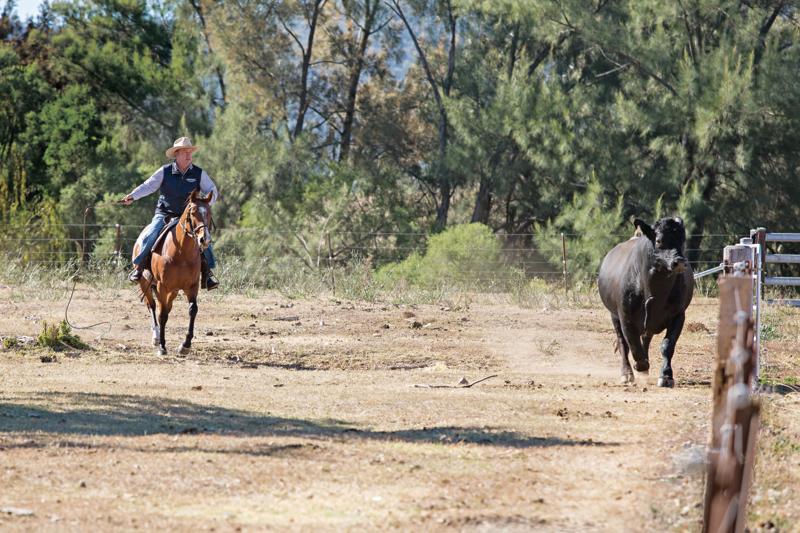 Sinclair rounds up one of his wayward prized Angus beef cattle.
Sinclair rounds up one of his wayward prized Angus beef cattle.
WHEN I was growing up on the family farm in the 1970s, sheep and wool production were the main concerns. That meant more staff, as sheep are labour-intensive. It was like a village. These days, there are more cattle and less people, a pity, but we are more efficient and you need that to make money out of agriculture. Although we’d had the Angus stud for a while, we really started growing in the 1990s after the wool price crashed and the Japanese invested in feedlots and abattoirs in Australia. By 1994, Nippon Meat Packers Australia (now NH Foods) alone had 50,000 cattle at its Whyalla feedlot on the Queensland-NSW border, and the Marubeni Corporation expanded the Rangers Valley feedlot near Glen Innes.
Their aim was to develop an Australian premium grain-fed beef supply based on Japanese expertise. They wanted cattle with good growth and high carcase quality, including good marbling, and we responded by changing the type of Angus we produced. In the 1990s, the high-quality carcases went to Japan and the hamburger beef went to the United States. Now there are a lot more diversified markets and they don’t just sell the whole carcase to one customer. There’s more emphasis on different cuts of beef and they go to China, the Middle East, Europe and Korea.
*Read more about the rising appetite for Australian beef and export opportunities in our feature, 'Can the China boom last?’
The development of feedlots and foreign ownership in Australia has taken the uncertainty and fluctuations out of the cattle market. It’s very dry at the moment, but feeder steers are still making quite good money – $3.20 a kilo live weight. Without feedlots, it would be very hard to sell those 400-kilo animals.
My grandfather would be amazed at all the information and technology we have on this farm today. We can do variable soil tests, use different fertiliser rates and we’ve developed more efficient use of water by using underground bores and piping. When I was a kid, most people relied on dams and creeks, so water was a lot more of a problem. Cattle are moved between paddocks now, so pasture has a chance to regenerate. Interestingly, I think our cattle-handling techniques have improved. We have better yards, the cattle are more docile and we’ve developed a calmer way of moving them, there are no dogs barking or biting them, the cattle are mobbed up and calmly drift in.
The biggest advance, though, may be the use of genomics. We collect hair samples from our animals and they’re sent away to a lab to be analysed. That information is then incorporated into the breeding values and genetic potential of that animal [Genomically Enhanced Estimated Breeding Values]. Booroomooka Angus is involved in progeny testing – the Angus sire benchmarking where they’re evaluated for the hard-to-measure traits such as carcase quality, yield, fertility and feed efficiency. This helps us in making better decisions and provides better information to our customers. Obviously, that’s a lot of data and collecting it takes a lot of time – every day, we’re collecting information from hundreds of cows. When a calf is born, it’s weighed within 24 hours, then again at weaning, 400 days and 600 days. We record everything from ultrasound scans for muscle growth to scrotal size.
*Read more about livestock genomics in our story, ‘The measure of success’ featuring Merino stud breeder Matthew Coddington who earns profitable returns and a global following for his flock’s prized genetics.
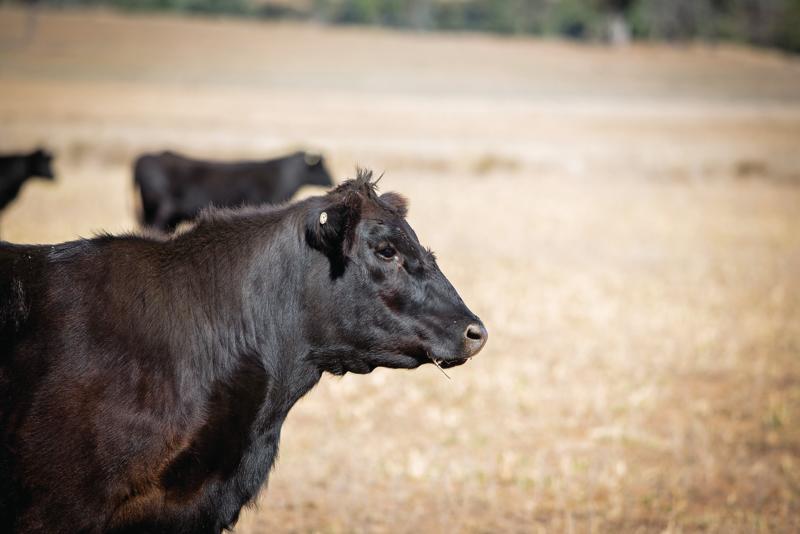
Even the breeding has changed, with every animal in our herd artificially inseminated using frozen semen. In the mid-Nineties, 90% of that came from the US. Now about 80% is from Australian studs, our own or others, because Australian Angus is so good.I think there will be even more use of genomic technology in the future and I predict there will be a closer connect between consumer and farmer through digital technology. We used to simply produce a product and hoped it sold. We worked in a commodity market. Now it’s a branded market.
Farming’s no longer the hard physical work it used to be; it’s a lot more mental. We want to keep moving forward. My dad Hugh and grandfather Gordon, were both president of Angus Australia and there’s a lot of knowledge and history in our family. New people to the breed add good things, but we’ve seen what works and what doesn’t.
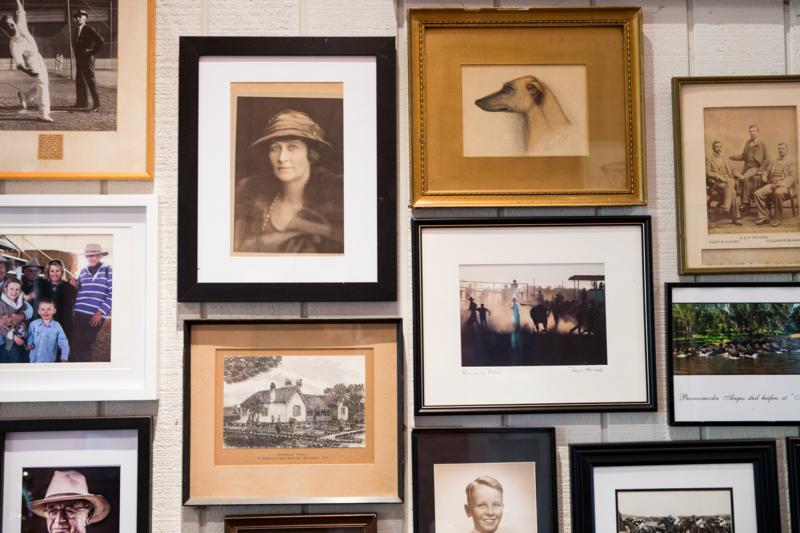 The homestead preserves the great ancestral history of Booroomooka Beef.
JACKAROO JOURNEY INTO THE PAST
The homestead preserves the great ancestral history of Booroomooka Beef.
JACKAROO JOURNEY INTO THE PAST
Two jackaroos who worked on Keera shared their memories in a book about the Munro family, found at their property.
*Find below an edited extract from the biography, “Munro’s Luck: From Scotland to Keera, Weebollabolla, Boombah and Ross Roy”, written by Jillian Oppenheimer.
ONE of jackaroo Don Wittington’s roles was driving HR Munro (Sinclair’s great-grandfather, Hugh) in his car. Even at 70, the farmer worked around the clock, inspecting wild mobs of cattle. Don recalls: “We drove from daylight to dusk, the roads were all unsealed and mainly black soil, sleeping sometimes under the stars, with the old man tending cow dung fires to keep mosquitoes away, but more often at station homesteads where he was always welcome.
“HR Munro was one of the finest men I had met. He never lost his temper about the idiotic things I occasionally did with horses, cattle and motor vehicles. The nearest he ever came to a tantrum was to call me a damned fool when I ruined his favourite car by trying to cross a creek that was too deep. I tied the car to a tree, but it was submerged in the raging waters and was never any good afterwards.”
Jackaroo John Noble worked under the supervision of HG Munro (Sinclair’s grandfather, Gordon), doing anything from drafting sheep to building cattle yards. John recalls: “HG was always rushing. He was one step ahead of himself in all his doings. Tireless in his energy, he took a poor view of those who did not share his enthusiasm or support a particular cause he was pursuing. You either admired him or you couldn’t tolerate him. I had never any doubt; to me, he was an admirable man… and the world needs many more like him!”